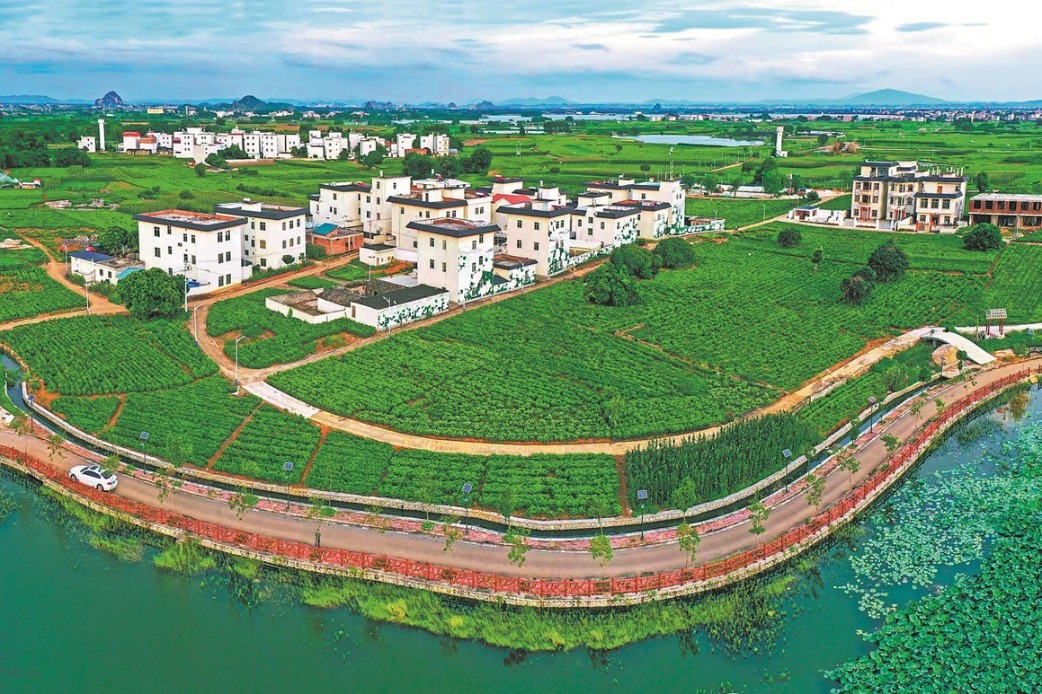Heritage sector's successes spark enthusiasm for more


The past decade witnessed a booming scenario for cultural heritage-related work in China, and the report delivered by Xi Jinping on Sunday in Beijing to the 20th National Congress of the Communist Party of China gives stronger impetus to the country's heritage administrators to uphold the spirit of cross-cultural communication in their work.
The report vowed to put more effort into the protection of cultural heritage and extend the reach and appeal of Chinese civilization.
Cheng Liang, head of the Gansu Provincial Bureau of Cultural Heritage, said that based on its resources and features, the province will give full play to the value of cultural relics and cultural heritage there. It will also try to make the Dunhuang Academy — the institute that oversees the Mogao Caves, a UNESCO World Heritage Site in Dunhuang — an example for the world of protecting cultural heritage and a vital place for Dunhuang studies.
In August 2019, when Dunhuang was President Xi's first stop during his visit to Gansu province, he highlighted the importance of better protecting the Mogao Caves and strengthening Dunhuang studies to promote the inclusive spirit they have stood for and to consolidate people's cultural confidence.
The Mogao Caves, a cluster of hundreds of Buddhist caves dating from the fourth to the 14th centuries and featuring exquisite murals and statues, are often seen as a symbol of exchange and mutual learning among various civilizations.
The Hexi Corridor, where the Mogao Caves are located, is the main artery of the ancient Silk Road and remains a key example of cross-cultural communication.
"We will build a national cultural heritage route along the corridor and enhance our research on the origin and formation of Chinese civilization," said Cheng.
"Taking advantage of Dunhuang culture and the Silk Road, we will promote cooperation and communication between diverse cultures and tell Gansu's good story to the world," he added.
The ancient communication routes connecting China and the rest of the world not only went over land, but also crossed the seas.
According to Fu Qisheng, head of the Fujian Provincial Bureau of Cultural Heritage, Fujian will step up efforts to research the Maritime Silk Road, an ancient trade route starting in China and connecting Asia, Europe and Africa, and unveil Fujian's participation in the communication and exchanges between different civilizations.
The Song (960-1279) and Yuan (1271-1368) dynasties witnessed a peak in ancient Chinese maritime trade. Quanzhou, a city in Fujian that was a center of trade at that time, was added to UNESCO's World Heritage List last year as "Quanzhou: Emporium of the World in Song-Yuan China".
"We will also proactively protect Fujian tulou (multifamily communal living structures unique to Hakka communities) and ancient stone residential buildings (along the province's coastal areas), highlight the study, protection and use of prehistoric sites like the (180,000-year-old) Wanshouyan Hills site, and carry out a number of programs related to underwater cultural heritage protection," said Fu.
In May, in a group study session of the Political Bureau of the CPC Central Committee, Xi also noted the significance of a national research program dedicated to tracing the origins of Chinese civilization.
According to Liu Runmin, head of the Shanxi Provincial Bureau of Cultural Heritage, Shanxi has been engaged in the program's archaeological research.
The work includes the archaeological work at the Taosi site, a Neolithic site dating back about 4,300 years. It is widely believed to have been the political hub under the reign of legendary ruler Yao.
Shanxi has a large number of cultural relics and ancient architecture. They are loosely distributed, posing challenges to protection efforts. According to Liu, priority has been given to relics protection, and people working in this field are reminded to fulfill their duty to protect the relics.
"By exploring thoughts hidden in the relics in a modern context, we can present excellent exhibitions and thus deepen mutual understanding of different civilizations," Liu said.
Wen Dayan, director of the international cooperation department of the National Cultural Heritage Administration, said cultural relics can help to better tell Chinese stories overseas as well as connect China with the rest of the world.
More joint projects with other countries on archaeology, conservation of endangered cultural heritage sites, and cooperative exhibitions will be launched by China, Wen said. He vowed that China will contribute to a more balanced and rational international order of repatriation of lost relics.
- European students explore modern China through BFSU program
- From Belgium to studying Chinese medicine in Yunnan: I found my answer at the South Expo
- Shanghai Disneyland to open new immersive, interactive exhibition
- China's anti-drug efforts yield results, yet complex threats persist
- Shenzhou XX crew to conduct second spacewalk
- Annual science gathering set for Beijing next month





































